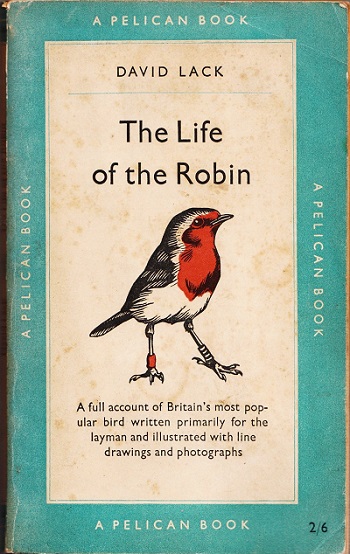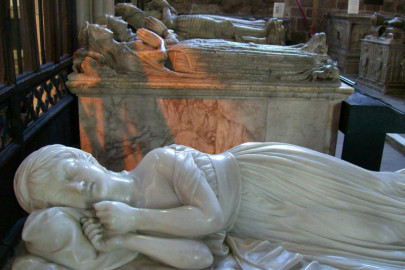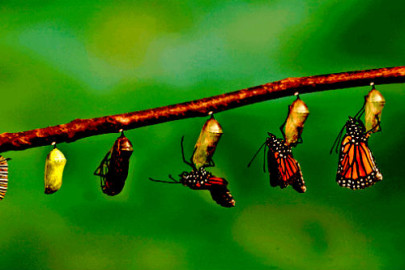Nige rediscovers a pioneering work of English natural history…
The world was made to be inhabited by beasts, but studied and contemplated by man: ’tis the debt of our reason we owe unto God, and the homage we pay for not being beasts. Without this, the world is still as though it had not been, or as it was before the sixth day, when as yet there was not a creature that could conceive or say there was a world. The wisdom of God receives small honour from those vulgar heads that rudely stare about and with a gross rusticity admire His works. Those truly magnify Him whose judicious enquiry into His acts and deliberate research into His creatures return the duty of a devout and learned admiration.
That’s Sir Thomas Browne in Religio Medici – and it’s the first epigraph of David Lack’s The Life of the Robin. Beneath it is a second epigraph – from Thomas Love Peacock’s Nightmare Abbey – and a third, from Anita Loos’s Gentlemen Prefer Blondes:
So we rode around the park until quite late talking and philosophising quite a lot. And I finally told him I thought, after all, that bird life was the highest form of civilisation….
Gerry says he has never seen a girl of my personal appearance with so many brains..
And on the title page verso the book is ‘dedicated to all those robins who patiently bore my rings and permitted my intrusion into the intimacies of their lives’.
Originally published in 1943, The Life of the Robin is an enchanting book, as well as being a pioneering study of the facts – not always terribly attractive – about the well loved garden bird, that tireless singer, fierce fighter and beady-eyed meeter and greeter. As the first epigraph suggests, Lack was a believing Christian as well as a scientist; later in his career, he wrote a book with the self-explanatory title Evolutionary Theory and Christian Belief: The Unresolved Conflict (he believed, reasonably enough, that science and religion each has its own sphere).
He was also, clearly, a very well read man with a sense of humour and a notably well furnished mind. In The Life of the Robin, the literary references come thick and fast: the chapter on Song has epigraphs from Keats, Cowper, W.H. Davies and Spenser, and features quotations from Pliny, Nicholas Cox, Peacock (again), Wells, Marco Polo, Porphyry and more – including even some scientists. For this is, at bottom, a scientific study, complete with diagrams, graphs and statistics.
If only – I can’t help feeling as I read it – if only scientists wrote like that these days. If only they read like that, if only they thought like that…
The Life of The Robin ends with an ‘Epilogue for the Reader Now Closing This Book’ – Robert Herrick’s lines Upon Mrs Eliz. Wheeler, Under the Name of Amaryllis:
SWEET Amarillis by a spring’s
Soft and soul-melting murmurings
Slept, and thus sleeping, thither flew
A robin-redbreast, who, at view,
Not seeing her at all to stir,
Brought leaves and moss to cover her ;
But while he perking there did pry
About the arch of either eye,
The lid began to let out day,
At which poor robin flew away,
And seeing her not dead, but all disleav’d,
He chirp’d for joy to see himself deceiv’d.
Lack also wrote a book on swifts – Swifts in a Tower – but this seems to be long out of print and prohibitively expensive. Some enterprising publisher should reissue it, with attractive illustrations – like those by Robert Gillmor that decorate my copy of The Life of the Robin.












Here is another example of a scientist (a doctor, like Browne) writing splendid prose, in this case a single sentence. It’s from “Buxton And Its Medicinal Waters” (1892) by Robert Ottiwell Gifford-Bennet, M.D., Senior Acting Physician To The Devonshire Hospital And Buxton Bath Charity:
“The antiquarian may take his stand upon Mam-Tor, the mother rock, when the moon sheds her silvery light o’er Loosehill Mount, and, carrying his mind back into the past some 230 years, hear the bugle’s note as it sweeps through the Wynnats Pass, and is taken up by the Peverel Castle and transmitted onwards through the Vale of Hope, calling the hardy dalesmen to their midnight rendezvous, there to be instructed in the science of war, so as to enable them to protect their homes and families against the marauding myrmidons of a cruel, heartless, and unreliable king; or if the antiquarian seeketh a knowledge of the High Peak folk-lore, and feareth neither pixie or graymarie, he can, on a spring night, just as the moon has entered her last quarter, and the first note from the belfry of the chapel in the frith has proclaimed the arrival of midnight, take his stand upon Blentford’s Bluff and peer into the dark and sombre depths of Kinder, when he will hear the hooting of the barn owl on Anna rocks, the unearthly screech of the landrail as he ploughs his way through the unmown grass in search of his mate, the scream of the curlew and chatter of the red grouse as they take their flight from peak to peak, and see the fairy queen come forth from the mermaid’s cave in a shimmering light, followed by her maids, who dance a quadrille to the music of the spheres, and hear the wild blast of the hunter’s horn heralding the approach of the Gabriel hounds as they take their rapid course across the murky sky, and become lost in the unfathomable depths beyond the Scout.”
Now that, Frank, is what I call a sentence…
Also, Shakespeare”s sonnet ‘Consolation’..another beautiful single sentence……….
Lord yes, a marvel of a sonnet…